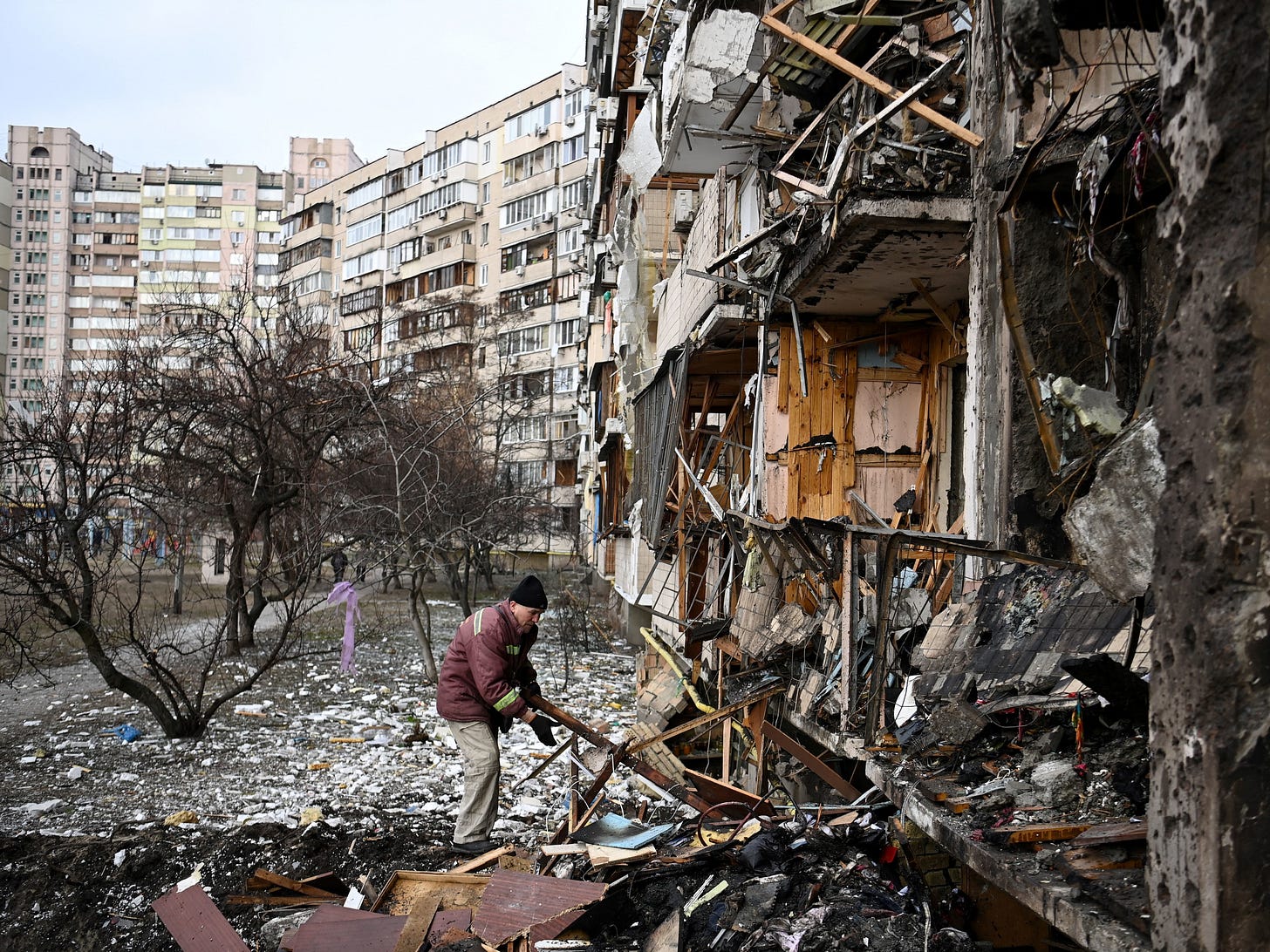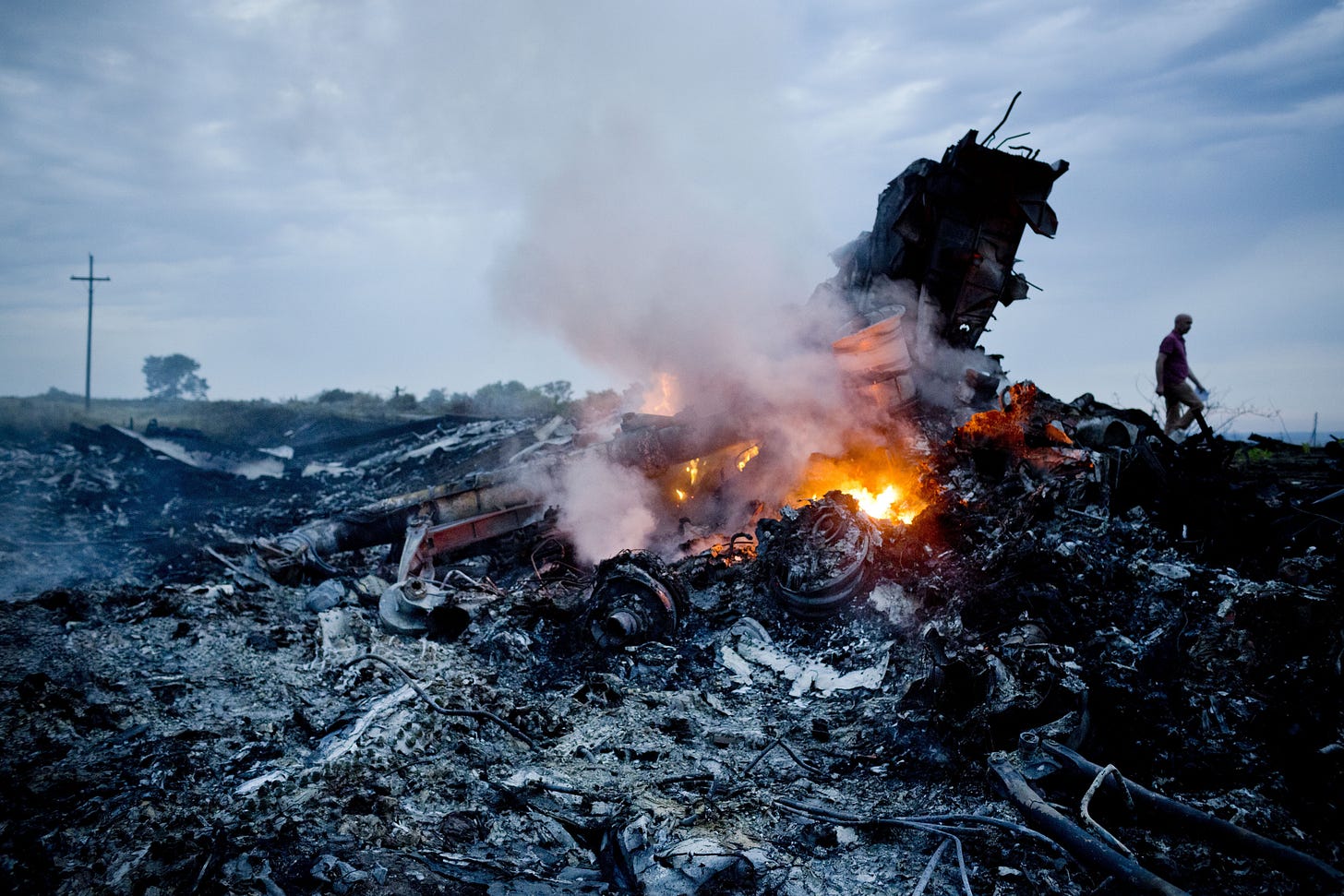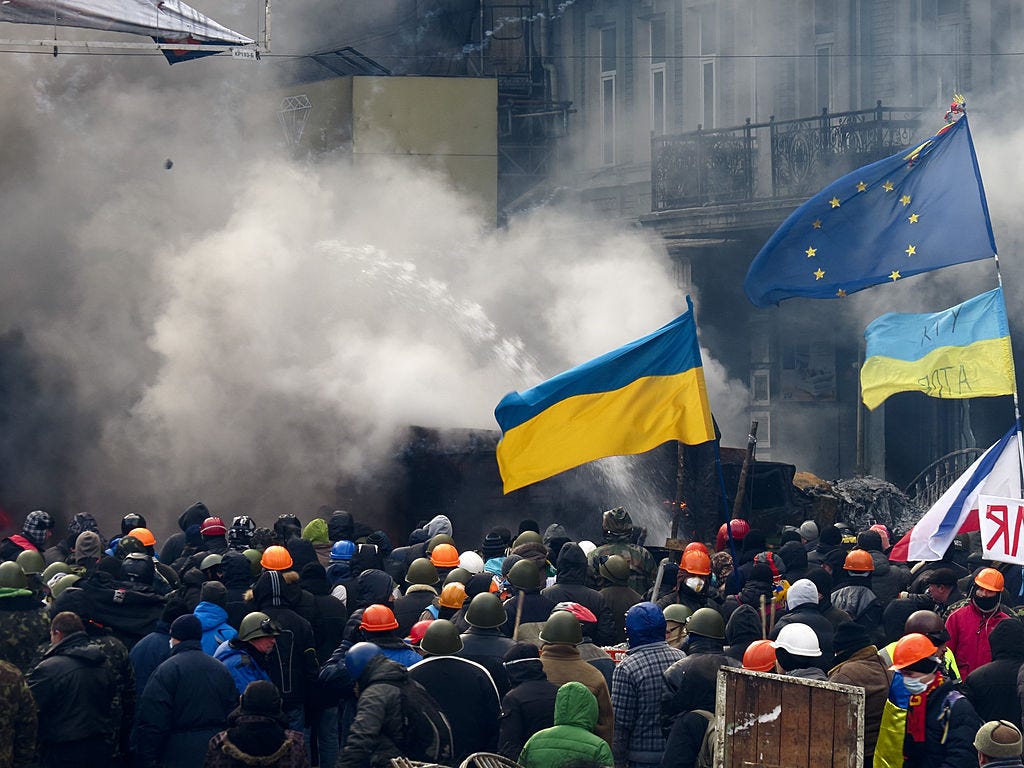Jun 23: Liam Collins, Frank Sobchak, U.S. Deterrence Failed in Ukraine
As published in Foreign Policy on June 20, 2023
U.S. Deterrence Failed in Ukraine
by Liam Collins and Frank Sobchak, Foreign Policy, June 20, 2023

A great deal of praise has been heaped on Europe and the United States for their sustained and determined response to Russia’s invasion of Ukraine, with much of the congratulatory talk centered on the damage being done to Russia. Kyiv’s Western allies have provided the fledgling Ukrainian military with Javelin and Stinger missiles, rocket artillery, and, most recently, modern tanks. Yet, until Feb. 24, 2022, the United States made little effort to deter Russia, despite ample evidence that it intended to invade.
From President George W. Bush’s tepid response to the 2008 invasion of Georgia to the Biden administration’s antebellum halfhearted gestures of support for Ukraine, U.S. policies left the perception that the United States was not willing to make a renewed assault painful for Russia. The result was yet another war and a tremendously costly one at that.
It is often difficult to determine when deterrence works because, almost by definition, it is the proverbial dog that does not bark. Absent being in the room when leaders remark that they are not carrying out an action due to a threat, it is difficult to assign the cause to deterrence.
When it comes to war, realist scholars such as John Mearsheimer have noted that for deterrence to succeed, the state seeking war should perceive that the chances of success would be low and the costs high. Part of altering a state’s calculus is simple numbers: how many tanks, missiles, aircraft, and other weapons the defending state possesses. In his seminal work Arms and Influence, Thomas Schelling artfully puts it, “The power to hurt is bargaining power.”
This created the central failure of U.S. policy. Refusing to send sophisticated weapons to Ukraine failed to signal to Russian leaders that an invasion of Ukraine would hurt—and potentially even fail.
In the run-up to the war, Russian President Vladimir Putin thought that his forces would march into Kyiv in a matter of days with few losses. After all, the international community did little when he annexed Crimea in 2014. Washington’s muted reaction to previous Russian provocations signaled an unwillingness to incur any costs to prevent Russia from doing what it wanted. U.S. intransigence toward providing lethal aid seemed to confirm that Ukraine lacked the capacity to resist, further reinforcing the Russian belief that the invasion would likely be easy and quick. The recent war in Ukraine is, therefore, a direct result of the West’s lack of resolve and failure to credibly deter Russia. Moscow thought it could get away with murder—as it had in the past.
Recall the aftermath of the 2008 invasion of Georgia. The Bush administration airlifted Georgian soldiers serving in Iraq back to Georgia to fight, provided a humanitarian aid package, and offered tersely worded denouncements and demarches. But it categorically rejected providing Georgia with serious military assistance in the form of anti-tank missiles and air defense missiles and even refrained from implementing punishing economic sanctions against Russia. The United States’ lack of resolve to punish Russia for its gross violation of international law was underscored when U.S. National Security Advisor Stephen Hadley’s remark “Are we prepared to go to war with Russia over Georgia?”—made during a National Security Council meeting after the war started—was later released to the media.
When the Obama administration took office, his team sought to reset relations with Russia. In short order, the United States abandoned Bush administration plans to build a missile defense system in Eastern Europe, canceled sanctions against Russian arms sector, and reduced the U.S. presence in Europe. By 2013, there were no U.S. tanks on German soil, a historic end to a deterrent force that had been in place for nearly seven decades. U.S. Army troops across Europe shrunk to a historic low of 30,000, just one-tenth of the commitment during the Cold War.
The United States did little to prevent or respond to the 2014 Russian invasion of Ukraine. Rejecting calls from within the administration and a bipartisan coalition in Congress, the Obama White House outright refused to provide any form of lethal aid to embattled Ukrainian defenders.
President Barack Obama, encouraged by German Chancellor Angela Merkel, was worried that providing even defensive weapons could result in an uncontrollable escalation. Ukraine also suffered from significant corruption, and there was fear that the weapons might fall into the wrong hands—a consideration that hadn’t come into play in far more corrupt states like Iraq and Afghanistan. As a result, Ukrainian pleas for Javelin anti-tank missiles, Apache attack helicopters, and other weapons were ignored. Instead, the administration rapidly provided $120 million in security assistance and another $75 million in military equipment such as night vision goggles, medical supplies, Humvees, and unarmed unmanned aerial systems. During Obama’s tenure, total military assistance amounted to $600 million—but never included weapons.
For its primary response to the 2014 invasion, the administration banked on punishing sanctions to alter Russian behavior. These amounted to travel bans levied on senior Russian political, military, and economic leaders; frozen assets; and economic restrictions. Key business leaders and cronies of Putin were targeted, and entire industries were banned from doing business with the United States. Many allies followed suit.
Such actions were seen as “smart sanctions” that focused, like precision-guided munitions, on hitting critical industries or individuals involved in the conduct of the war. The hope was to minimize the damage to common Russians. But without making the public pay a price for war, the economic pain was inherently limited. Russia simply devalued the ruble and cashed out the reserves it had built up in its central bank from a decade of high energy prices to weather the sanctions-induced recession—a cost it felt worth paying in return for the seizure of Crimea.

The shootdown of Malaysia Airlines Flight 17 in July 2014 by Russian-controlled separatists was also met with a muted response from Washington. The U.S. response was limited to assisting the investigation and calling on Russia to end the war against Ukraine. While some additional sanctions were levied against Russia, particularly by Europe, the attack actually served to harden Obama’s resolve against providing weapons to Ukraine, reflecting his worries about further escalation.
Instead, to improve deterrence against Russia, the administration pushed for NATO’s Enhanced Forward Presence. The new defense posture consisted of four multinational battalion-sized units deployed to areas—the Baltic states and Poland—most likely to be attacked. However, these measures were meant to deter Russian aggression only against NATO states and had no bearing on the danger of future conflict in Ukraine.
Next, the Obama administration established the Joint Multinational Training Group-Ukraine in 2015 with the mission of training, equipping, training center development, and doctrinal assistance to the Ukrainian armed forces. The group included hundreds of trainers from the United States, the United Kingdom, Canada, and Lithuania. Notably, U.S. trainers were limited to providing only “nonlethal training” to the Ukrainians, producing a muddled and incoherent set of rules. For example, U.S. trainers could train Ukrainians on small unit tactics that involved “shooting, moving, and communicating” but were prohibited from teaching sniper skills because these were considered “lethal.” That lack of commitment signaled, yet again, that the United States was not willing to give Ukraine the training or firepower it would need to repel Russia.

The Trump administration aimed to make a clean break with its predecessor and demonstrate strength. But in reality, President Donald Trump’s approach differed little from the previous two administrations. He reversed the prohibition on providing lethal aid to Ukraine and agreed to ship the much-desired Javelin missiles. Still, only 210 were delivered along with a paltry 37 launchers. More importantly, they were banned from being used in combat and instead were required to be locked up in a storage facility to serve as a “strategic deterrent.”
The amount of security assistance saw similar cosmetic changes, with a modest bump up to $350 million in the administration’s first year. But those unexceptional annual increases came with caveats and considerable drama. In 2019, when Ukrainian President Volodymyr Zelensky asked Trump for more Javelins, he demurred and blocked the delivery of nearly $400 million in assistance unless Zelensky agreed to investigate former U.S. Vice President Joe Biden—his opponent in the 2020 election—and his son. Trump held up the assistance for 55 days, only releasing it when his actions became public, eventually leading to Trump’s first impeachment.
Even though Trump begrudgingly allowed the Javelins and more aid, his administration was unwilling to send a general officer to serve as the senior defense official in Ukraine. The Obama administration had appointed retired Gen. John Abizaid to be the senior defense advisor to Ukraine, but he was only a part-time consultant and no longer on active duty. Abizaid supported assigning an active-duty general to Ukraine to coordinate the U.S. effort and made this known to U.S. European Command and the Defense Department. The response was that the U.S. military did not have a general it could dedicate to the mission.
Previously, when the priority was great enough, the U.S. miliary has assigned generals or admirals to serve in the U.S. embassies in Israel, the U.K., Egypt, Turkey, Pakistan, Kuwait, Saudi Arabia, the United Arab Emirates, and Iraq—yet could not spare even one of its 620 generals or admirals for Ukraine.
Further weakening the U.S. deterrent posture, Trump began questioning the United States’ commitment to NATO and even declined to affirm NATO’s Article 5, its most important mutual defense clause. Worse, in 2018, Trump employed heavy-handed tactics more suited for a transactional relationship than an alliance, explicitly threatening member states that he would not come to their aid in the event of a Russian attack unless they paid up. Trump described NATO as “obsolete” and, like a 1940s union boss, harshly decried its European members for not paying their dues.
By some accounts, Trump was even considering the nuclear option: leaving NATO altogether. The message to Russia from such fratricidal melees was clear: If the United States would not protect fellow NATO states that it was treaty-bound to defend, then the United States would definitely not defend a non-NATO country in Russia’s backyard.
The poor signaling only continued with the Biden administration. Even as it became clearer that Russia was considering an attack, the United States drastically limited the supply of weapons that it provided to Ukraine. In November 2021, U.S. officials snubbed Ukrainian requests for shoulder-fired Stinger anti-aircraft missiles—a purely defensive weapon.






